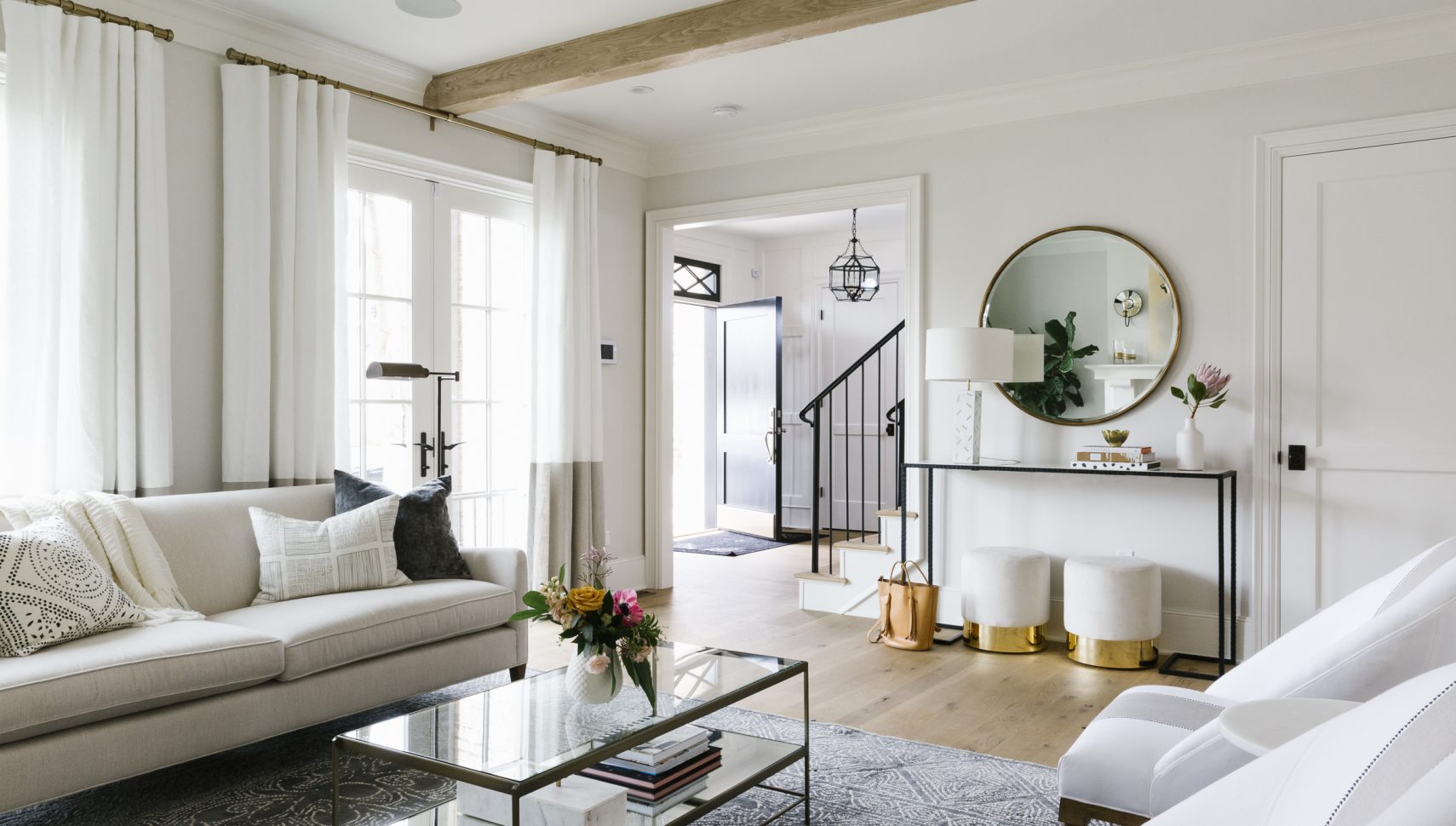There are a lot of intricate details that must come together when styling a space. From achieving balance in furnishings, to effortlessly styling and establishing a distinct ambiance, one misstep can be the difference between feeling perfectly at home… or like something is simply off.
Think of decorating like baking a cake (or your quarantine sourdough bread)—leave out one ingredient or mix it up in the wrong order and poof, we have a recipe for disaster. OK OK, that might be a tad dramatic… But let’s just say you wouldn’t win the show-stopper challenge on the Great British Baking Show. It’s the same with design. Small details out of whack can wield a surprising impact on a room, in the not-so-good way.
But have no fear! (Seriously. Breathe.)
Thankfully there are some very simple solutions to take your room from blah to ah hah! and our designers are here for you every step of the way. Here are seven of the most common interior design mistakes we see and how to avoid them to curate a home you’ll love.
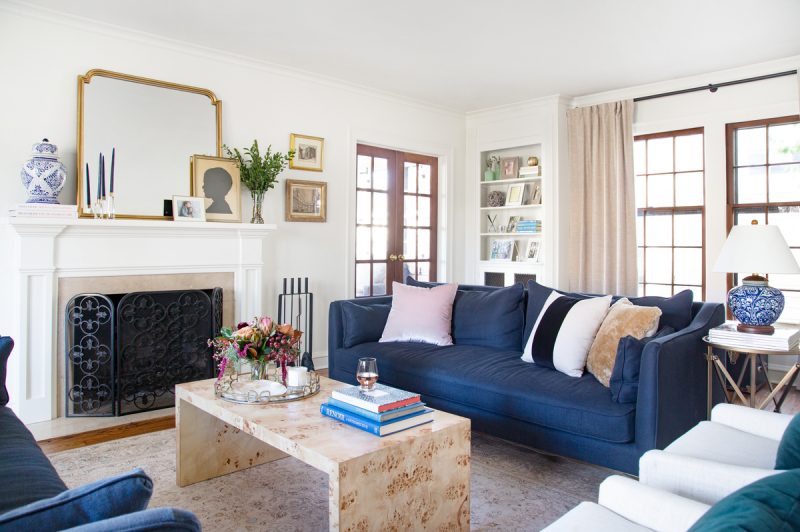
Everything the Same Height
One of the biggest interior design mistakes people make is buying décor of the same height. While it’s easy to think of this tactic as creating more order in the space, having everything fall on the same visual plane (aka: all the same height) can actually make a room feel rather stunted and uninteresting.
Think of a beautiful city skyline—the variation of building heights and shapes create a pleasing and iconic aesthetic. That’s what we’re aiming for in the home, as well. Furniture of varying heights, a statement chandelier, and a tall bookshelf or curio cabinet can all contribute to a more balanced feel.
It’s also important to not fill a small studio with oversized furniture like large sectionals, or trying to arrange smaller furniture about a spacious room. Instead, take a Goldilocks approach: not too big, not too small, but juuuust right. Finding furniture proportionate to the space you’re in is key. Quick tip: measure furniture and tape it off in your space before making a purchase to avoid a costly blunder.
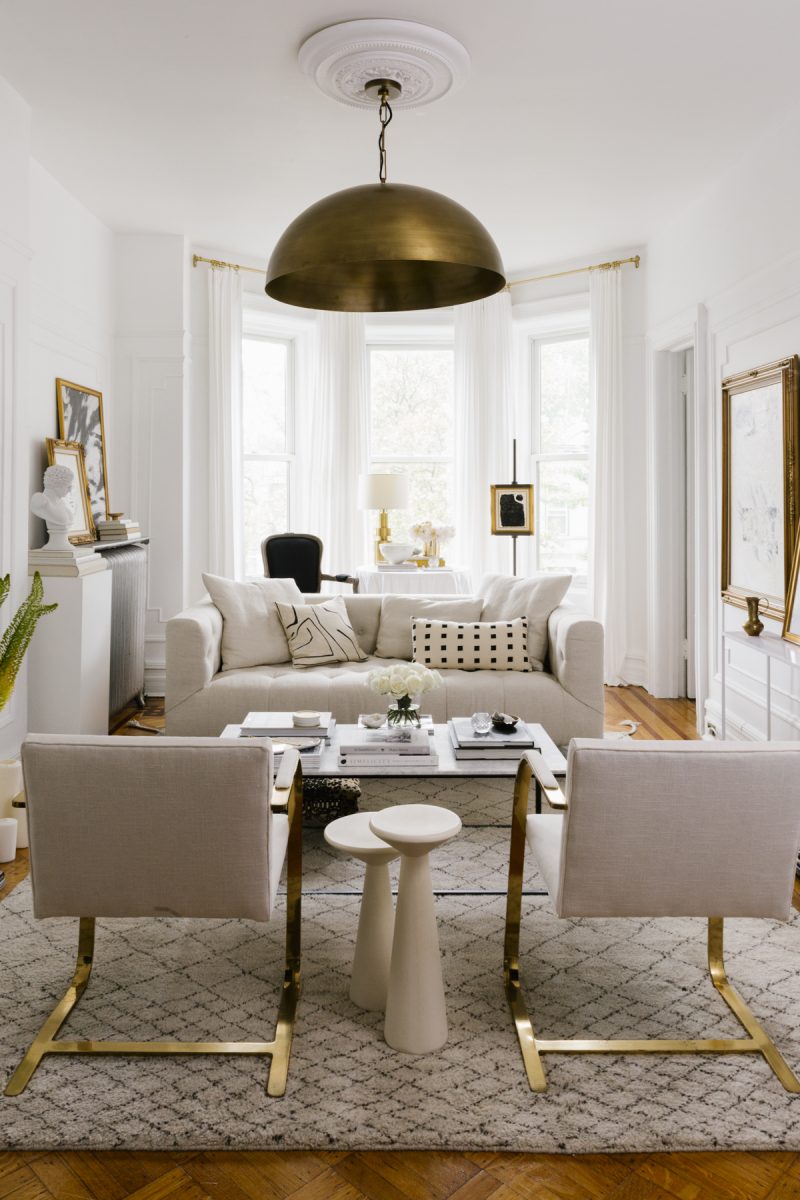
Unbalanced Layout
When arranging the room, most people tend to push furniture up against the walls to create the illusion of a more open space. In actuality, it does just the opposite. While you may free up the center of the room, your space will feel more empty, sterile, and even a bit awkward.
Arranging pieces in the living room into more intimate seating areas fosters connection and relaxation. In more elongated rooms, try breaking it up by sectioning off several little seating areas or separating the lounge area from the dining table with the back of a sofa. For more compact spaces, center furniture around a focal point like the fireplace or television.
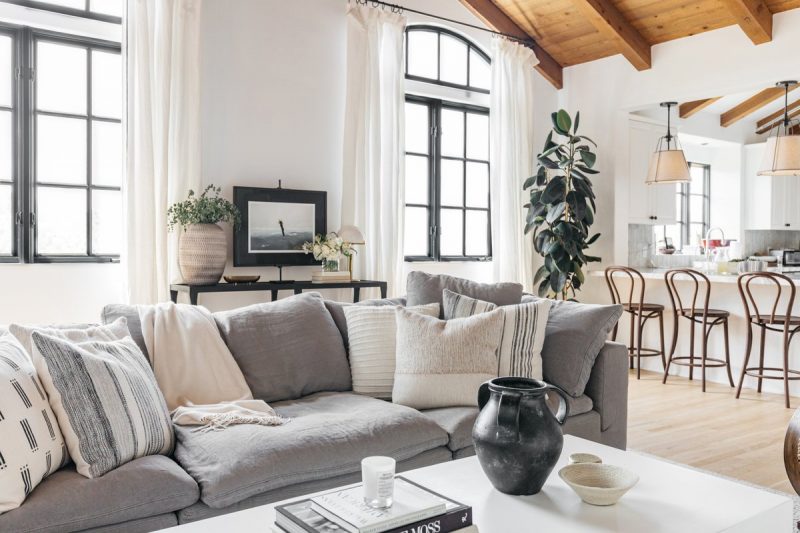
Overcrowding Your Space
When decorating and outfitting your space, adhere to the mantra of less is more. Go Marie Kondo on the place and keep only items that spark joy. Instead of waiting around for spring cleaning, pour a glass of wine and go through an end-of-year edit to reduce extra clutter. Editing, or removing items, can create a well-styled vignette just as much, if not more, than adding to it. When deciding what to keep, have a purpose for the pieces in your home—most-loved books, cherished family photos, and your collection of prints from your favorite artist or travels add a personal story to your space (certainly more than that random chotsky from a generic decor outlet).
While yes, excess clutter is a design no-no, the goal is not to create an untouchable and unlivable museum-like feeling. Including personal elements, particularly ones that have some meaning to you, creates a space that speaks to who you are. Even the most minimalist of spaces benefit with a picture or two or piece of collected art.

Shying Away from Color
Although we love a beautifully layered neutral space, it’s true that the all sterile white trend is coming to an end. Don’t make the mistake of shying away from color! Even the most muted of spaces can benefit from adding in a variety of tones and textures through rugs, throw pillows, and art. A warm beige or soft camel can add that much-needed dimension.
But don’t be afraid to go all in on a more vibrant and lively palette. We’re seeing a resurgence of colorful spaces to infuse energy and joy into your home. That said, if you are considering a more bold color scheme, make sure to mix warm and cool tones for a balanced aesthetic. For example, dusty blues can pair nicely with soft blushes or even burgundy accents, while sage green plays well with a cognac leather.
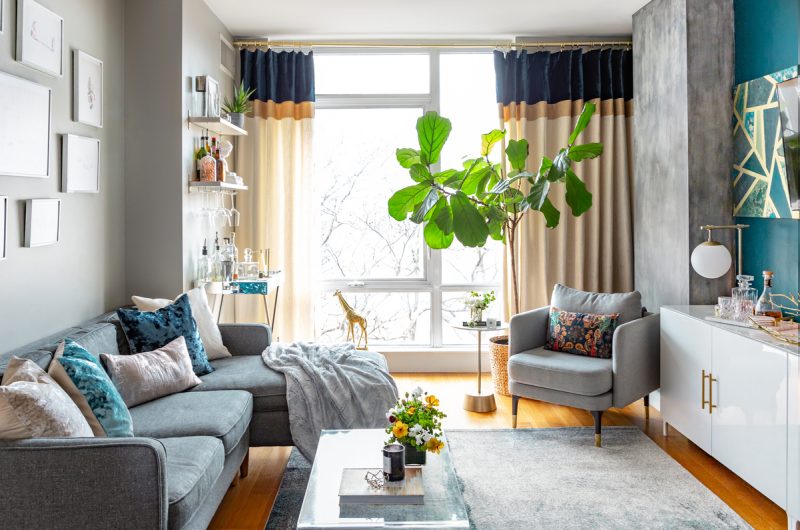
Picking the Paint First
Rather than picking the paint color of your room first, start with your furniture and décor. See what looks good together—paint should complement your space, not dictate it. If you want to experiment with a bold color minus the commitment, opt for an accent wall instead.
When selecting your color, test a patch of it on the wall first to see how it varies in the different light. If you can, swipe on a sample rather than just taping a swatch to the wall for a more accurate representation of how it will appear in your space.
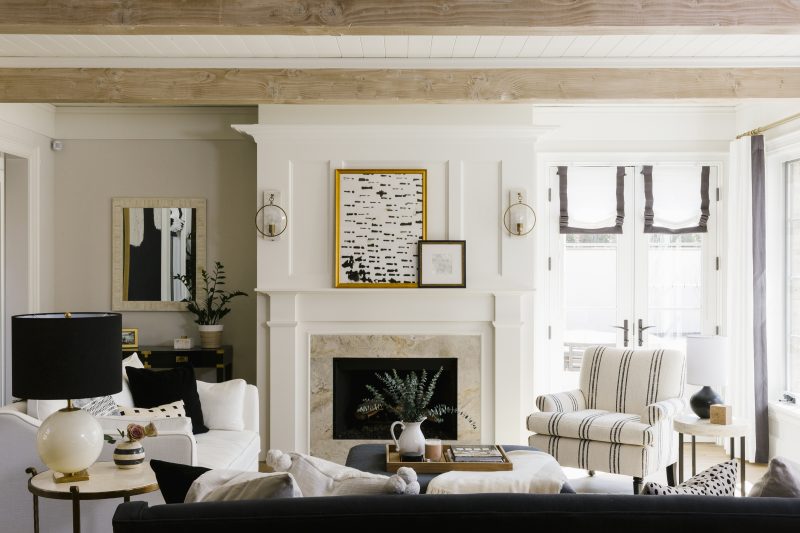
Lack of Layered Lighting
Your room could be Pinterest-perfect—and then the sun goes down. Having too dim or too harsh of lighting transforms an otherwise wonderful space into a drab or sterile environment with the literal flick of the switch.
A designer rule of thumb: try for at least three sources of both ambient and task lighting to illuminate your space beyond the standard overhead can lights. Incorporating various pieces like a chandelier, floor lamps, table lamps, and even sconces allows you to customize the amount of light in any particular room and create the desired ambiance. For a more relaxed atmosphere, change your bulbs to energy-saving LEDs and opt for warmer hues. Bonus points: install a dimmer switch for the ultimate in adjustability and mood-setting.
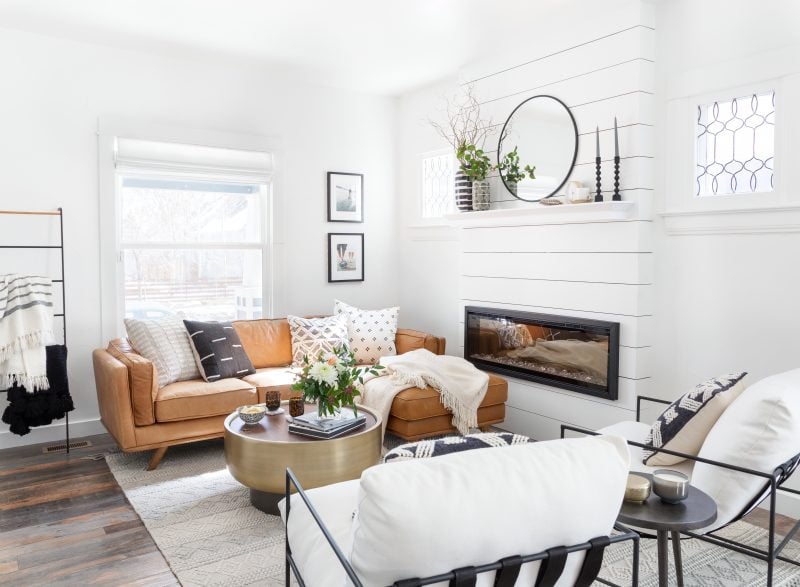
Not Asking for Help
Designing a room—let alone a home—can be a daunting task and a hefty investment. While we live in the era of Pinterest and DIY, a professional interior designer lends expert insight and assistance to tangibly bring your design dreams to life.
Instead of simply picking a trend and running with it, partnering with a designer gives you a go-to guide for all things home, creating a more timeless and evergreen space that truly reflects you, your style, and your personality. They can also help you find the perfect pieces while sticking to a budget to design a home you’ll love for years to come.
Take a load off and put our Havenly designers to work—we’ll be your guide to interior design bliss. Take our fun style quiz to get started.

